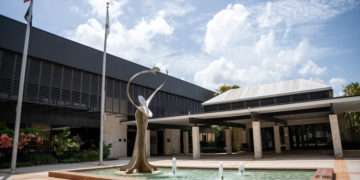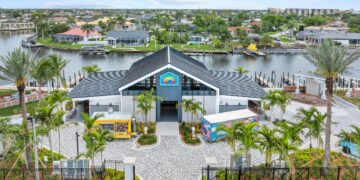Any retrospective about how Southwest Florida fared in 2022 must be cut into two parts—before and after Hurricane Ian.
On the 271st day of the year, Sept. 28, Hurricane Ian’s destructive force of 155 mph winds and 6 to 15 feet of storm surge devastated the coastal region. As of this writing, there have been 130 Hurricane Ian-related deaths in Florida, including 61 in Lee County, according to the Florida District Medical Examiners report—making it the state’s deadliest hurricane since 1935.
Hurricane Ian also disrupted the lives of tens of thousands. It wiped out most of the businesses on Estero Island, including Times Square, the heart and soul of Fort Myers Beach. It clobbered Sanibel and Captiva islands. It inflicted heavy damage to Pine Island, Matlacha, Cape Coral, Fort Myers and far inland, too. From the southwestern reaches of Naples, where the Naples Pier was heavily damaged, on north to Rotonda West in Charlotte County, which received about 30 inches of rain that fateful day, effects were felt far and wide.
The final 94 days of the year were—and continue to be—fraught, with responses to and then recovery from the storm. But the first 75% of 2022 dealt not with fierce winds and storm surge. Instead, it demonstrated shifts in business and real estate trends as the nation, state and region continued recovering from the financial aftershocks of the COVID-19 pandemic.
Florida’s real estate markets across all sectors—residential, retail, industrial and office—had been hot for all of 2021. They slowed in 2022, but not by much. There were still mega, multimillion-dollar deals going down, and a flurry of new businesses opening.
“My team and I, our hearts go out to all of those who suffered a loss, whether it’s to life, their health or their physical belongings,” says Jim Shiebler, vice president of investments for Marcus & Millichap commercial real estate brokers, recognizing Hurricane Ian’s destruction. “It’s tragic what has occurred. I don’t want to talk about business without recognizing the gravity of what happened.”
Retail trends shift, go small
More than two years before Hurricane Ian, COVID-19 compounded with e-commerce trends to disrupt the retail landscape in 2020 and 2021. But in 2022, some of the businesses that had been forced into hibernation because of the pandemic—fitness and wellness centers, for example—came back.
As Gulfshore Business began looking back on the year, one trend stood out above the others: the rise of the mini-strip retail centers. These relatively smaller strip shopping centers of new construction were springing up across all of Southwest Florida.
Cape Coral’s latest strip center, at the northwest corner of Pine Island Road and Del Prado Boulevard, began filling in with tenants later in the fourth quarter, with Firehouse Subs, First Watch and Mission BBQ three of the more notable inclusions.
Estero Crossing is nearing the end of construction and set to open in early 2023. It is a 306-unit apartment and retail complex south of Corkscrew Road and just west of Interstate 75. Although designing the project began in 2014, the mix of eventual tenants has certainly evolved, said Keith Gelder, president of Stock Luxury Apartment Living.
Stock Development’s list of signed leases is indicative of the kinds of businesses that are thriving in the new retail world: Chicken Salad Chick, Crisp & Green (salad and healthy foods), Dunkin’ (donuts), Oak & Stone (artisanal pizza and craft beer), Orangetheory Fitness, Restore Cryotherapy, Sherwin-Williams (paint), Affordable Dentures, The Joint (chiropractor) and Bubbakoo’s (burritos and tacos).
“There’s been a shift away from malls and mega retail,” Gelder says. “I think COVID proved to the world that retail was still very much needed; convenience, wellness and those types of things that can’t be replaced with online retailers, can’t be replaced by Amazon. The most recent changes were fixating on health and wellness. The tenant mix really shifted over the past 24 to 36 months.”
Near Naples, The Pointe at Founder’s Square opened this year at the southeast corner of Immokalee Road and Collier Boulevard, providing the same type of tenant mix as Estero Crossing: restaurants such as I Heart Mac & Cheese, Fuji Sushi Bar & Asian Bistro, Skillets breakfast-lunch cafe, Tacos & Tequila Cantina, South Street City Oven Grill, Crisp & Green and Outback Steakhouse all opened this year. So did wellness businesses including Collier Urgent Care and Gulf Coast Orthodontics, plus Luxury Nails & Spa and Salon Bellezza.
In Fort Myers, Benderson Development filled two of these mini-strip centers adjacent to one another off Dani Drive near Six Mile Cypress Parkway. The region’s first of six planned Chicken Salad Chick restaurants opened there in September.
“It’s interesting, right?” Shiebler says. “This is where the retail market was going, pre-pandemic. Right now, the retailers that are thriving are the necessity retailers, or the experiential retailers. The product-type retailers are shrinking in quantity and in square footage.
“The 40,000-square-foot center is going to 26,000 square feet; 30,000 square feet is going to 19,000. And so on. And they’re certainly diversifying, as well.”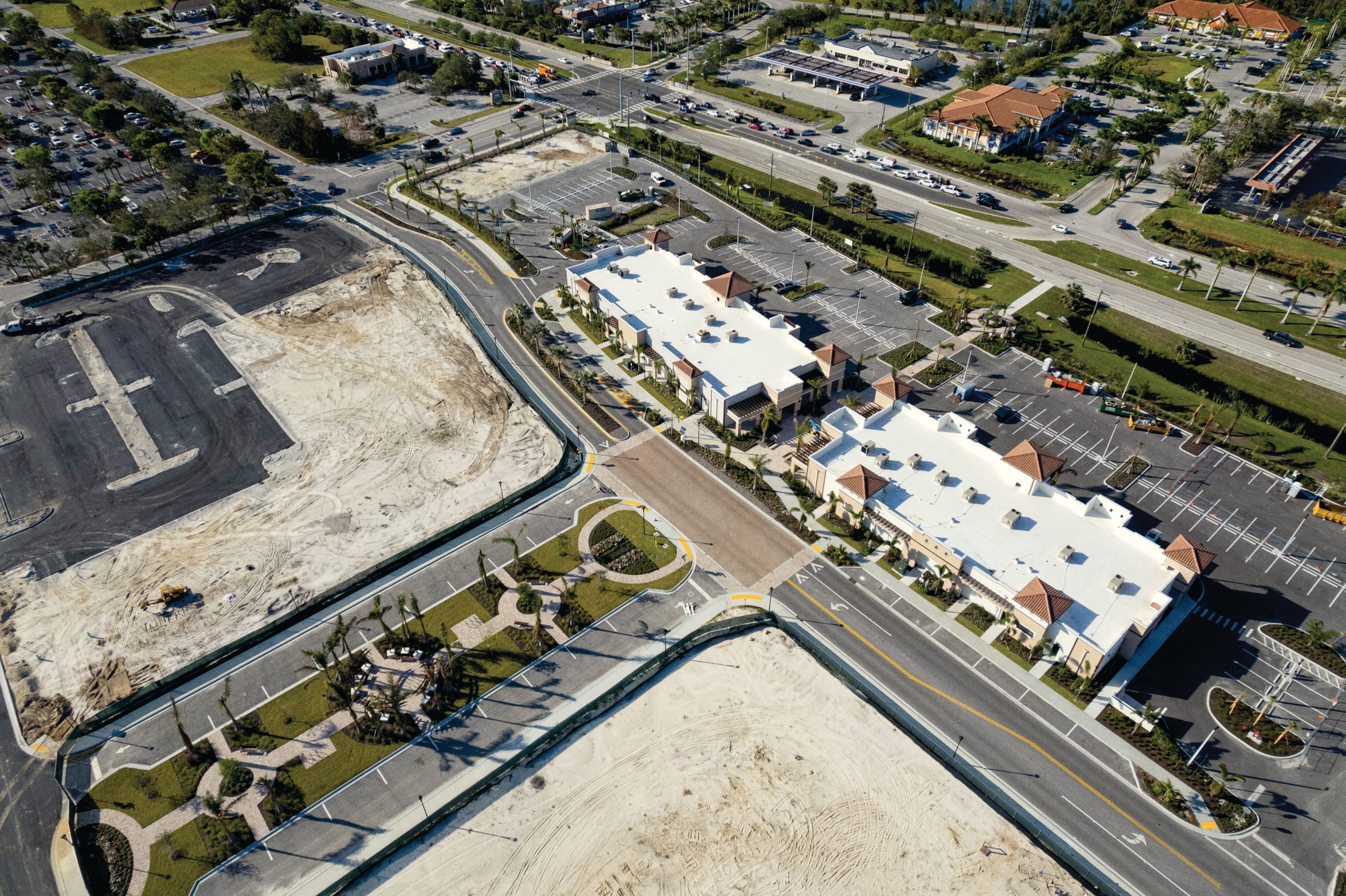
Big-box store changes
In Cape Coral, a former flooring outlet store became one of the first new businesses to open post-Hurricane Ian. But the new Sprouts Farmers Market grocery store at Pine Island and Pondella roads became just the latest in the trend of repurposing big-box stores.
“There’s six or seven asset classes within retail that thrived during the pandemic,” Shiebler says. “Certainly, grocery topped the list.”
Dollar/discount stores, including Family Dollar, Dollar Tree and Dollar General, keep thriving along with drug and grocery stores, home improvement stores, convenience stores and gas stations, as well as what Shiebler called QSR: industry-speak for “quick-service restaurant,” such as a Chicken Salad Chick. “Those retail classes boomed during the pandemic,” Shiebler says. “And they continued to thrive.”
In south Fort Myers at the Market Square shopping center, a haven for big-box stores, Petco looks the same on the outside but has changed on the inside because of the online retail revolution.
“Petco is a massive store,” Shiebler says. “But their online purchasing has been gobbled up by e-commerce. As a company, they’ve realized that they need to diversify. So, they’ve built two new businesses inside: a grooming service and the other is like a pet hospital service. Now they have become essential retailers as opposed to being just product-based. They’ve dedicated 40% of their space to those services to attract consumers who need those services.”
Retail rises, declines by type
Two more downward trending sectors are banks and auto retailers. “And it’s interesting,” Shiebler says, “because older clientele still go into banks. But during the pandemic, all the seniors had to learn how to do online banking. Now, you do not have a replacement consumer for that sector. The millennials and the younger generation, they grew up with online banking. That’s why you have that space littered with empty banks. The 4,000- to 5,000-square-foot banks are becoming 2,000 square feet. They recognize that they don’t need that mass of employees.
“The next product type that has a murky or gloomy horizon or future is the auto parts sector—Advance Auto Parts, AutoZone, O’Reilly’s. It’s because of the pivot to electric vehicles.”
But even electric vehicles need tires and get into crashes, which is why stores such as Tire Choice are thriving, Shiebler said. “No matter the propulsion of the vehicle, they all need collision repairs, and they need tires,” he says.
Shiebler also said Med-tail is positioned to thrive, using the play on words between medical and retail. “That is the new darling,” Shiebler says. “It’s extremely fortified. It has a massive level of demand. It’s a necessity-based retailer. Particularly in Florida, where you have two things going on. An insane level of migration that exponentially increased during the pandemic. It continued to break records because of remote working. When you couple that with the median age of the seniors and their needs, it’s very, very fortified and very secure.”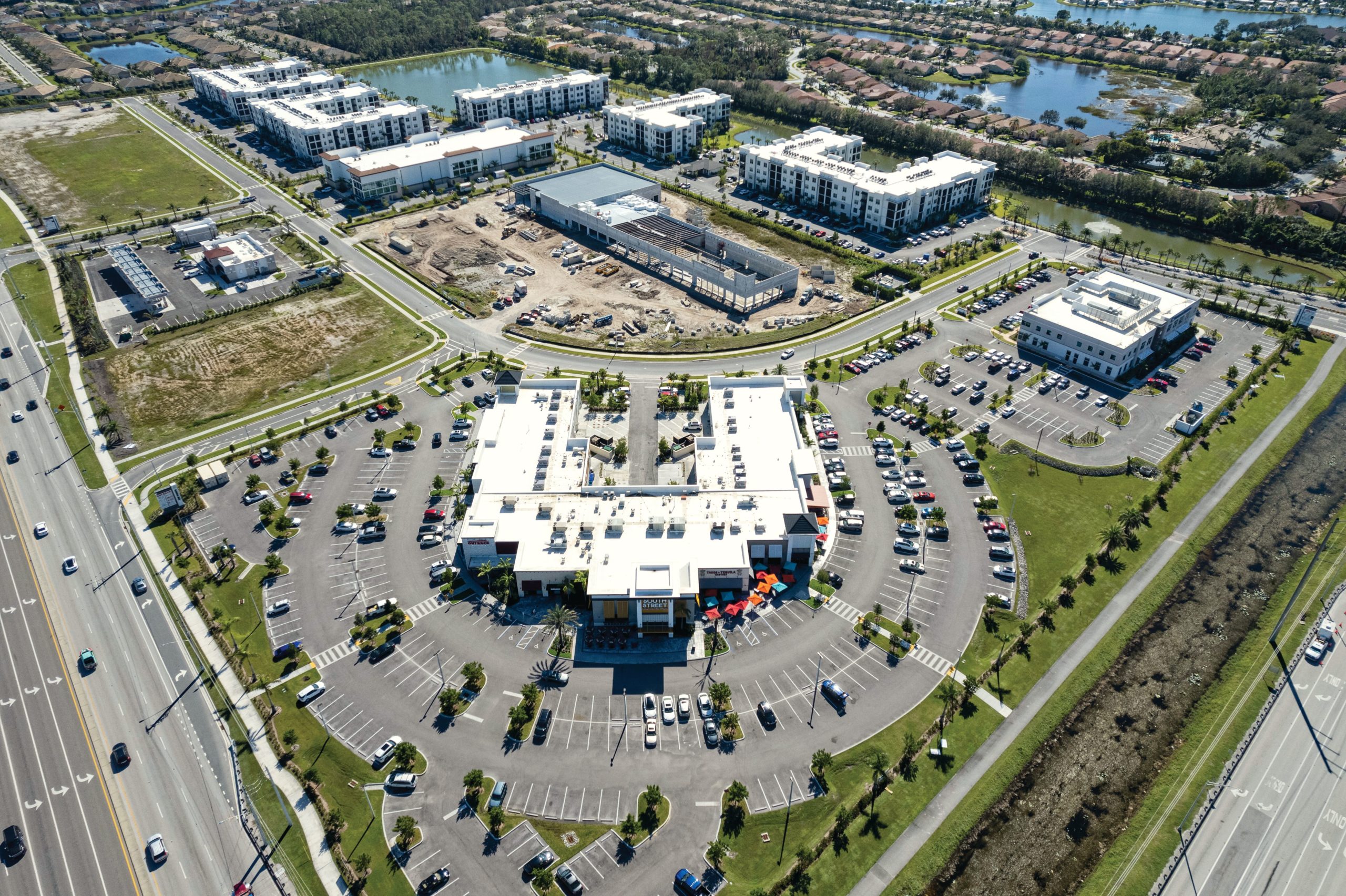
Home market clouds
In September, rising interest rates put a damper on residential home sales, said Denny Grimes of Keller Williams Realty—even more so than Hurricane Ian, which didn’t arrive until the end of the month. The number of home sale transactions in Southwest Florida dropped by 43% over last year. Ian, of course, will factor into the housing market in 2023.
“I think October (2022) will be the slowest number in 10 years,” Grimes says. “And then it will start picking up at a pace probably a little slower than 2019.”
Grimes described his crystal ball as cloudy. That’s because there will continue to be newcomers to the area, mixed with coastal residents leaving because of the hurricane mess. “There’s going to be an incoming and outgoing tide of owners,” Grimes says. “There will be people who run for the hills. However, for everyone who wants to leave, there’s somebody knocking on the door, looking for houses.”
Another real estate agent, Ronnie Delfino of Amerivest Realty, already started getting calls after Hurricane Ian about listings that have been sitting on the market for weeks.
“I think this is going to revitalize our market, quite frankly,” Delfino says. “What I mean by that is, we were getting to a point this summer where things were sitting on the market for a little longer. You’re going to see a lot of them get scooped up by people who have major damage to their multimillion-dollar properties.
“I don’t think this storm is going to stop the northerners from coming to Southwest Florida, because we still live in paradise. And in my opinion, this was a 100-year storm. We haven’t had anything this catastrophic on such a vast scale.”
Apartments, apartments
The number of displaced residents will be in the thousands. This means all of the apartment units constructed and opened this year will be filling up fast, which should pave the way for new projects to get underway, too.
The rental home market also is tight, and vacation rentals that once blocked off short-term stays are shifting to longer-term occupancies.
“Just when you thought it couldn’t get any worse for a rental shortage, it did,” Grimes says. “Our phone is ringing off the hook. Finding a rental is a very inefficient process in a normal market.
“Right now, it’s hideous. There really needs to be a bulletin board; an old-fashioned bulletin board. People would write their phone number on it 25 times, and you pull off a tab, and then you’d call it. Communication right now is challenging. We have a lot of empty condominiums and villas. A lot of the people who were displaced, they need something that’s furnished. Just like everyone is able to donate water bottles and generators, we’ve got to get the word out to homeowners.”
After Hurricane Katrina hit New Orleans in 2005, the city experienced a 26% drop in population 15 years later, U.S. Census records show. Delfino did not expect such a drastic impact from Hurricane Ian.
“It’s apples and oranges,” he says, “or apples and green beans. Fruits and vegetables. Southwest Florida is still one of the most desirable places to live in the world.”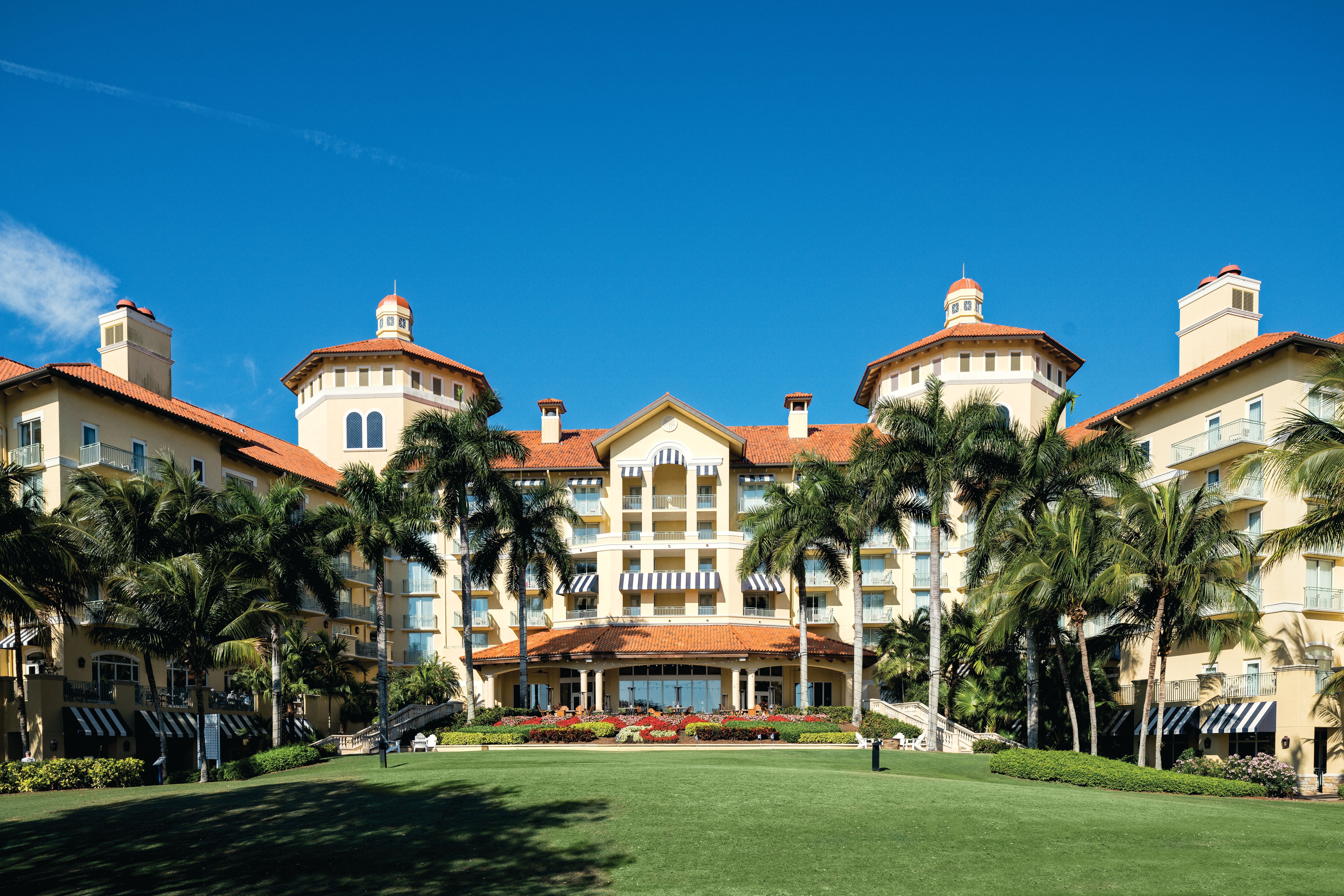
Year of hotels became year of hell
The Ritz-Carlton, Naples Beach Resort was in the midst of a major $50 million addition to be unveiled in a matter of weeks when Hurricane Ian surged across Vanderbilt Beach in late September. Complementing the resort’s dramatic “Evolution of an Icon” remastering project was a coastal-inspired redesign reflecting tropical breezes and soothing waves. In a matter of hours, those idyllic breezes and waves would become hurricane-force winds and a massive storm surge slamming into the classic resort and other coastal properties along the Gulf.
Mark Ferland knew that 2022 would be a defining moment for The Ritz-Carlton Resorts of Naples, but little did he know how the year would historically shape the luxury brand’s iconic properties.
Not only is The Ritz-Carlton, Naples not unveiling its new 14-story tower in December, as originally scheduled, but it’s not reopening until at least March after sustaining millions of dollars in damage from Hurricane Ian. Its temporary closure comes at a time during the busy season when the hotel’s revenue reaches $20 million per month. In addition to the monumental cost to rebuild the resort, it’s experiencing the loss of revenue from its restaurants, banquets and standard room rates ranging from $1,665 to more than $6,000 per night for some club-level suites.
March will mark the first anniversary of The Ritz-Carlton Resorts of Naples welcoming Ferland as area general manager of two of the brand’s prestigious properties on Florida’s Paradise Coast. A seasoned industry leader, Ferland was prepared to usher the iconic local resorts into a new chapter of a storied history. It was unthinkable to foresee the nightmare ahead.
While the Ritz-Carlton Golf Resort farther inland was spared serious damage in North Naples, its 37-year-old sister property on the beach encountered millions of dollars’ worth of destruction. Historic storm surge tore through the beachfront hotel, damaging the heart of the resort. Its entire first floor flooded, destroying its electrical power grid, laundry equipment, loading dock, human resources and wine room, as well as some of its restaurants and back-of-house rooms storing the resort’s banquet chairs, china and silverware.
In Ian’s aftermath, the Ritz laid off 591 employees in October and announced that it would be closed for more than five months. “The safety of our guests and ladies and gentlemen remains our priority,” Ferland said in a brief statement.
South Seas Island Resort on the northern tip of Captiva Island laid off 238 positions, according to paperwork filed with state officials. Reservations at the 330-acre resort have been canceled through at least Jan. 31. “The hotel sustained significant roof damage and water penetration. Other areas of the resort fared similarly, and several areas cannot be repaired without rebuilding them to current building codes due to the extent of the damage,” resort officials report.
Pink Shell Resort, an icon on Fort Myers Beach since 1950, had to lay off 195 employees after hurricane damage forced it to close for at least a year. The 195-room property was already in the midst of a $7 million renovation project when Ian hit.
Lani Kai Island Resort, a spring break destination on Fort Myers Beach since 1978, vows to rebuild after a 15-foot storm surge from Ian engulfed it, washing out its ground-floor shops, bars and offices while reinforced concrete pilings saved the rest of the building.
Nearby on Fort Myers Beach, the builders of the sprawling new Margaritaville Beach Resort may have inadvertently benefited from years of construction delays. Interior buildout had yet to begin inside the concrete block buildings being built in the once-colorful tourist destination.
Other major regional resorts under construction along the Gulf face additional setbacks after years of delays. Storm damage temporarily halted construction on the 785-room Sunseekers Resort Charlotte Harbor and on the 216-room Four Seasons hotel at Naples Beach Club resort.
Along Gulf Shore Drive in North Naples, the Vanderbilt Beach Resort and La Playa Beach & Golf Resort both remain offline because of Ian. La Playa and its beachside Baleen restaurant are projected to reopen on or before Dec. 15. Vanderbilt Beach Resort plans to reopen its condos for resort guests by Dec. 15, while the pool and beachfront hotel building are targeted to reopen no later than Jan. 15. “Because it suffered more significant damage, we do not believe that we will be able to reopen the Turtle Club restaurant until late summer or early fall of 2023,” the resort reports.
Even before the hurricane hit, 2022 was shaping up to be the year of hotels, albeit on a much more positive note. That included notable sales of three historic hotels last spring in Naples.
London-based Henderson Park bought Naples Grande Beach Resort from Denver-based Northwood Hospitality for $218.4 million, plus $24.8 million for its 18-hole golf course and $4.8 million for the 15-court tennis center. Pebblebrook Hotel Trust, a publicly traded real estate investment trust that also owns La Playa, acquired the 119-room Inn on Fifth in downtown Naples from local entrepreneur Phil McCabe for $156 million. In mid-March, Denver-based Mission Hill Hospitality acquired the 99-room Inn of Naples from Dallas-based MCR for more than $15.3 million.
The Capri Inn is the new name for Trianon Old Naples, an upscale boutique hotel that joined the Opal Collection after selling for more than $24 million in November.
Also last spring, demolition of the historic Naples Beach Hotel & Golf Club commenced to make way for redevelopment of the Naples Beach Club, a mixed-use resort that will include the aforementioned Four Seasons hotel. Also in Naples, a three-story AC Marriott is under construction abutting Naples Square on the corner of U.S. 41 East and Goodlette-Frank Road.
The new 113-room Fairfield by Marriott launched on schedule off Bonita Beach Road in Bonita Springs a day after the catastrophic storm made landfall in Southwest Florida. Many other smaller hotel properties in the region are undergoing construction or renovation.
– Tim Aten
Notable deaths
Before Hurricane Ian changed the local landscape, the region lost some longtime notable figures who gave years of their time and energy to make a difference in our communities.
Myra Janco Daniels, the legendary founder and CEO of the Naples Philharmonic Center for the Arts, died in June three days before her 97th birthday. The Philharmonic Center, popularly known as The Phil and eventually renamed Artis—Naples, is the cornerstone of Daniels’ legacy. The Pelican Bay campus includes another one of her significant creations: the Naples Museum of Art, now the Baker Museum. These cultural destinations pioneered by Daniels put Naples on the international map for world-class art, music and theater.
Lee County Commissioner Frank Mann also died in June. Mann began his career in public service in 1974, representing Lee, Charlotte and Collier counties in the Florida House of Representatives, then served in the Florida Senate for four years. In 1993, he was appointed as a Lee County commissioner, a role in which he served until the day of his passing this summer. Throughout his public service career, Mann was known for his leadership in protecting Florida’s natural resources.
Another regional environmentalist, Nancy Payton, died in May. Until her retirement in 2018, Payton was the regional policy director of the Florida Wildlife Federation, where she was instrumental in creating wildlife crossings and protecting Florida panthers. To honor her, Collier County proclaimed July 10, 2022, as Nancy Payton Day.
Nancy Laschied, who co-founded the Neighborhood Health Clinic in Naples with her late husband, William, also died in August. She devoted more than two decades providing medical care for the working poor who lacked health insurance.
Southwest Florida also lost an icon who spent his time working behind the scenes in construction and real estate development. Daniel Harper, who died at 96 in April, played a role in building almost every prominent road in Lee County and pioneered mining in the southeast corridor of the county, which helped him transform dirt roads into asphalt.
In late September, there were more than 120 deaths associated with Hurricane Ian in Lee, Collier and Charlotte counties. Many of those deaths occurred on Fort Myers Beach.
Those lost in the storm included Martha “Marti” Campbell, a 74-year-old retired consumer science teacher, who was sheltering at home when her Fort Myers Beach house collapsed. Campbell became well known in local theater circles for her many years as an usher at Florida Repertory Theatre and the Barbara B. Mann Performing Arts Hall in Fort Myers.
Campbell’s neighbor on Hercules Drive, Mitch Pacyna, nicknamed the “Mayor of Fort Myers Beach,” also perished in the storm when his home collapsed. The 74-year-old retired FedEx worker was known for welcoming people to the Chicago-themed sports bar he created in his home garage.
Many other Southwest Floridians died in the historic Category 4 storm that made landfall in Lee County.
– Tim Aten

